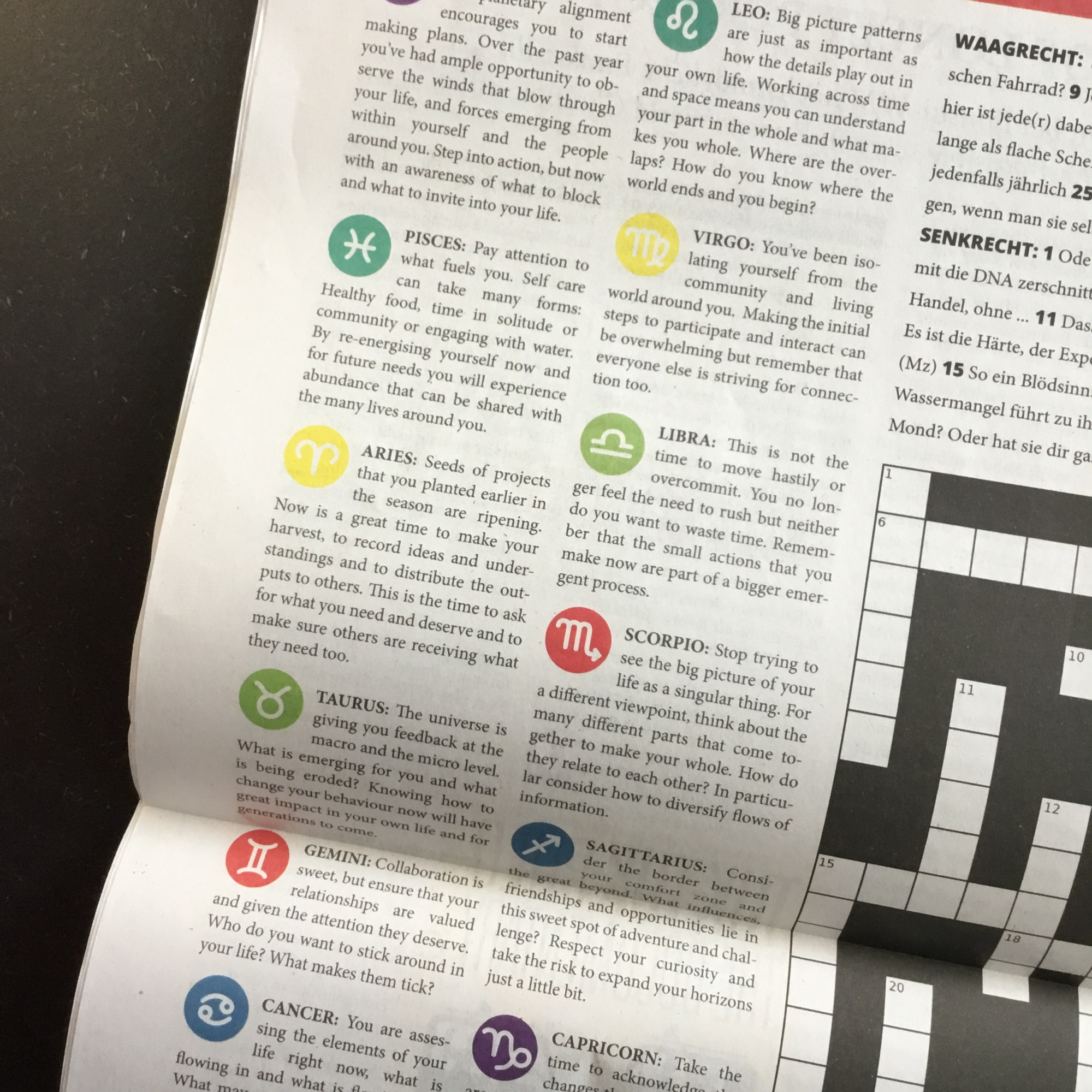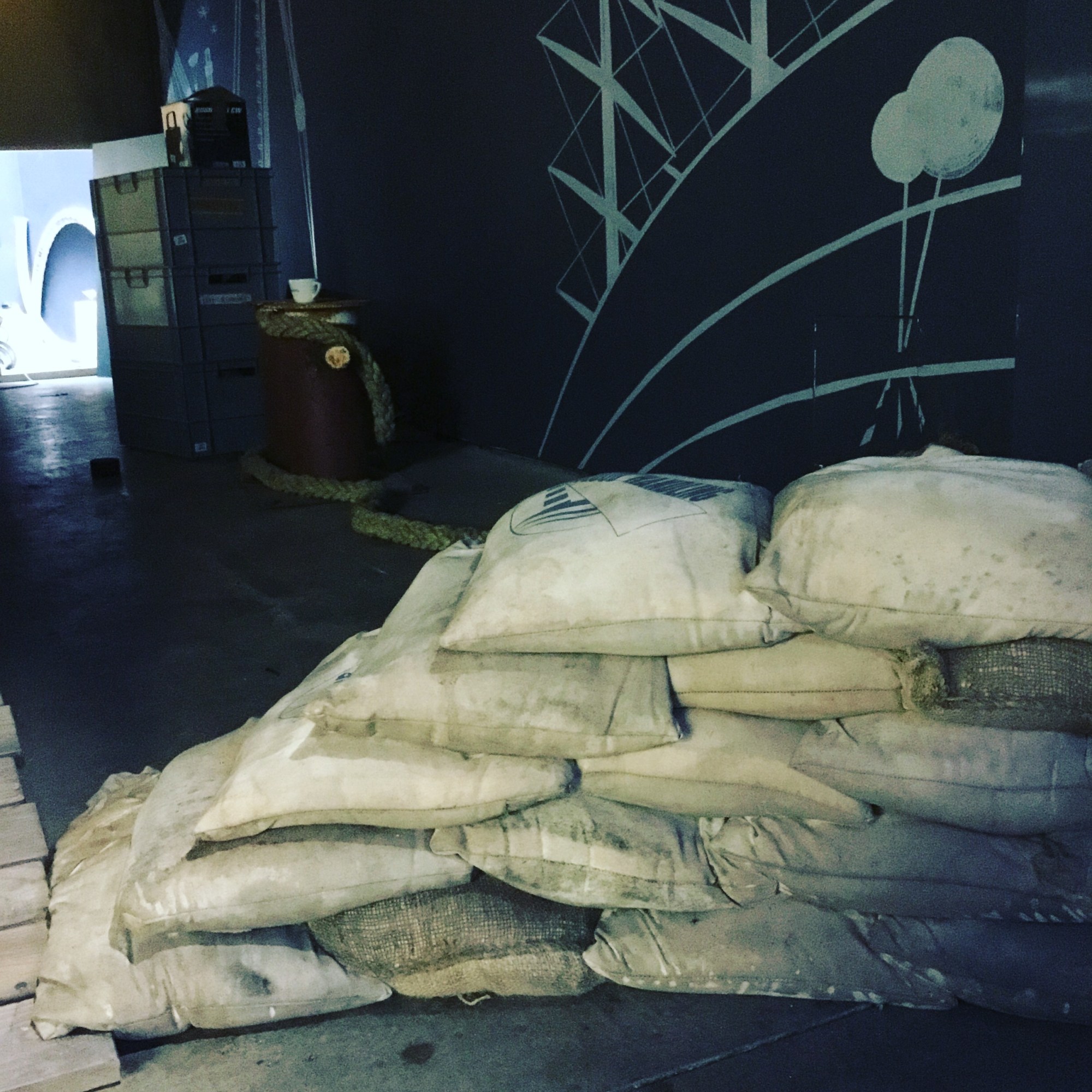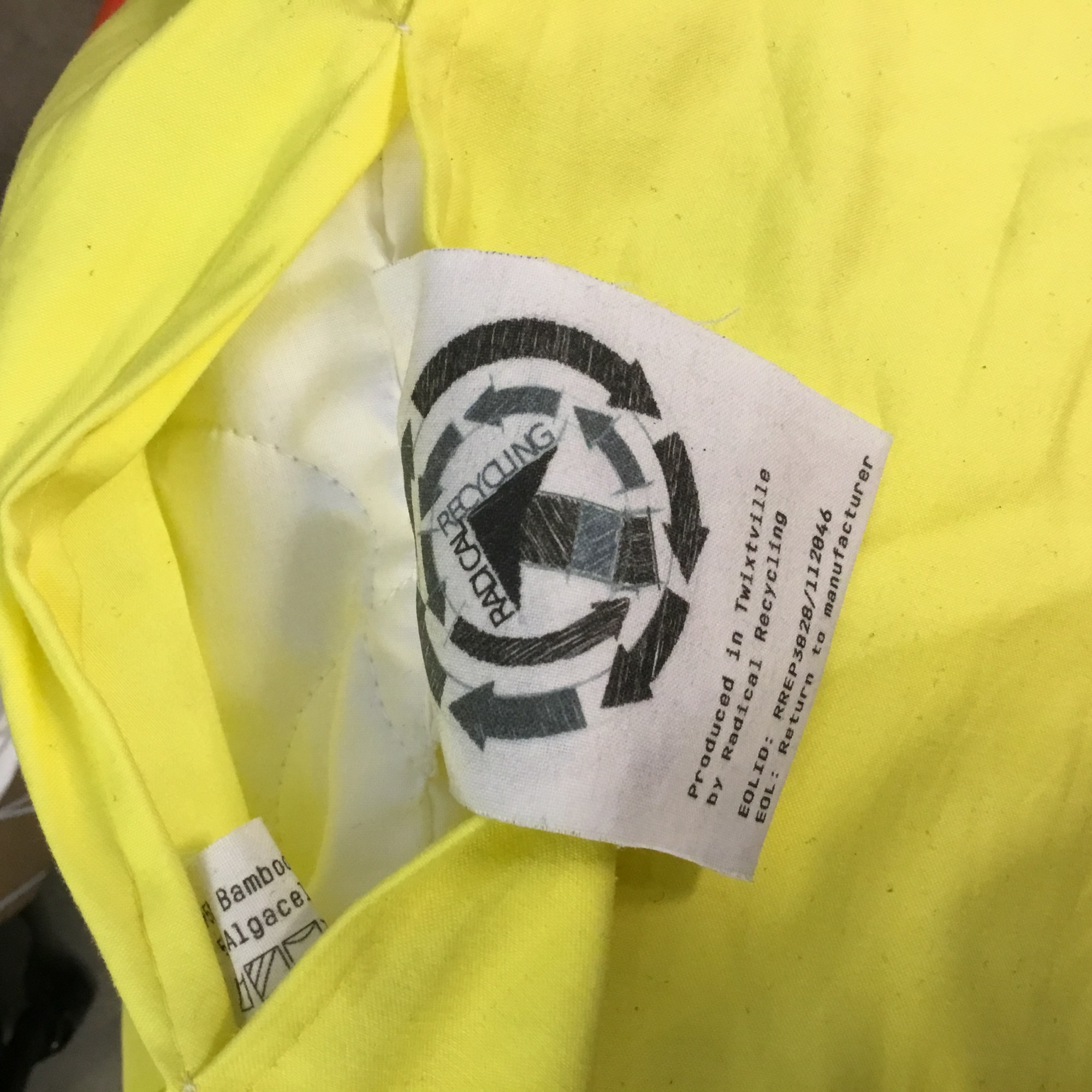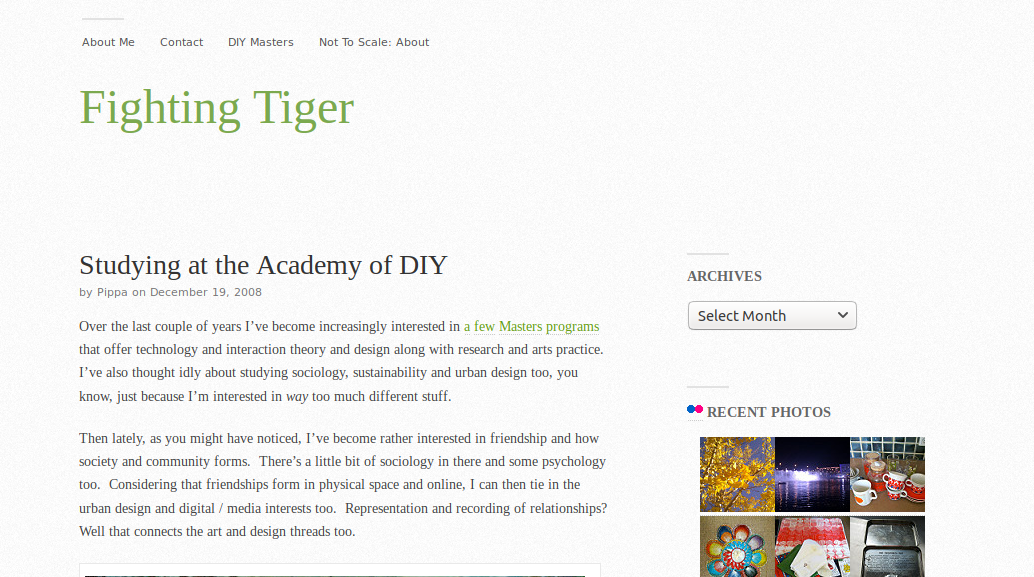My partner’s arts collective Time’s Up develop physical narratives of future scenarios. Or to put it another way, that means they imagine a possible future based on current trends and build and decorate a set that illustrates that story world. Visitors to the space are invited to walk through the exhibition and explore the spaces and details (rooms, audio landscapes, furniture, posters) of a particular imagined future in the fictional harbourside town of Turnton in the year 2047. Over the past fortnight Time’s Up have been installing the most recent incarnation of the Turnton world into the Angewandte Innovation Lab in Vienna, Austria.
One major artefact that Time’s Up develop to explain the ecologically damaged but socially improved world of September 2047 is a newspaper. While it might seem odd that “old-fashioned” technology such as newspapers exist in the future, it is suggested that as the concept of newspapers has endured many centuries so far, it is likely they’ll still exist in 28 years.
Making a newspaper means filling the newspaper out with articles, advertisements and things like comic strips and crosswords. While the core members of Time’s Up write many of the stories, they also invite their broader community of collaborators to contribute material.
Newspapers often include horoscopes and Tim suggested that I contribute that content. While I am quite interested in planetary alignments and transits and their implications for how to plan gardening and personal activities I am not an astrologer! Instead we decided to use Holmgren’s 12 principles and use them as the basis for each sign’s text.
I tried to make the texts somewhat instructional about social permaculture and to provide permaculture ideas by stealth. I do hope that in the year 2047 our world is far more ethical and ecologically minded than it currently is.






I also helped out with the setup of the exhibition (filling holes and ageing sandbags) and made details like care labels from the future for some of the textile based elements.
Offering to contribute to the exhibition follows on from one of the outcomes of my plant woman design which was to get involved in more collaborative art making.
One of the reflections that we had was that maybe in the year 2047 there are no horoscopes in newspapers but just permaculture advice? I actually like the idea of both the astral bodies and permaculture getting the recognition they deserve. Regardless, if you’d like to find out your sun sign’s permaculture advice for Friday 13th September 2047 please read below.
Aquarius / Observe and Interact this week the planetary alignment encourages you to start making plans. Over the past year you’ve had ample opportunity to observe the winds that blow through your life, and forces emerging from within yourself and the people around you. Step into action, but now with an awareness of what to block and what to invite into your life.
Pisces / Catch and Store Energy Pay attention to what fuels you. Self care can take many forms: healthy food, time in solitude or community, engaging with water or natural systems. By reenergising yourself now and for future needs you will experience abundance that can be shared with the many lives around you.
Aries / Obtain a Yield Seeds of projects that you planted earlier in the season are ripening. Now is a great time to make your harvest, to record ideas and understandings and to distribute the outputs to others. This is the time to ask for what you need and deserve and to make sure others are receiving what they need too.
Taurus / Apply Self-Regulation and Accept Feedback The universe is giving you feedback at the macro and the micro level. What is emerging for you and what is being eroded? knowing how to change your behaviour now will have great impact in your own life and for generations to come.
Gemini / Use and Value Renewable Resources and Services Collaboration is sweet, but ensure that your relationships are valued and given the attention they deserve. Who do you want to stick around in your life? What makes them tick?
Cancer / Produce No Waste You are assessing the elements of your life right now, what is flowing in and what is flowing out.. What may seem worn out and stale may still serve another purpose even if you aren’t the one who will see it.
Leo / Design from Patterns to Details Big picture patterns are just as important as how the details play out in your own life. Working across time and space means you can understand your part in the whole and what makes you whole. Where are the overlaps? how do you know where the world ends and you begin?
Virgo / Integrate Rather Than Segregate You’ve been isolating yourself from the community and living world around you. Making the initial steps to participate and interact can be overwhelming but remember that everyone else is striving for connection too.
Libra / Use Small and Slow Solutions This is not the time to move hastily or overcommit. You no longer feel the need to rush but neither do you want to waste time. Remember that the small actions that you make now are part of a bigger emergent process.
Scorpio / Use and Value Diversity Stop trying to see the big picture of your life as a singular thing. For a different viewpoint, think about the many different parts that come together to make your whole. How do they relate to each other? In particular consider how to diversify flows of information.
Sagittarius / Use Edges and Value the Marginal Consider the border between your comfort zone and the great beyond. What influences, friendships and opportunities lie in this sweet spot of adventure and challenge? Respect your curiosity and take the risk to expand your horizons just a little bit.
Capricorn / Creatively Use and Respond to Change Take the time to acknowledge the changes that are unfolding around you at small and large scales. How can you best respond in order to take advantage of the changing tides? Look around and see who you need to collaborate with at this moment in history.
Time’s Up’s exhibition Change Was Our Only Chance is at AILab as part of the Vienna Biennale until September 27, 2019.



